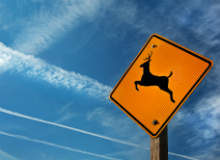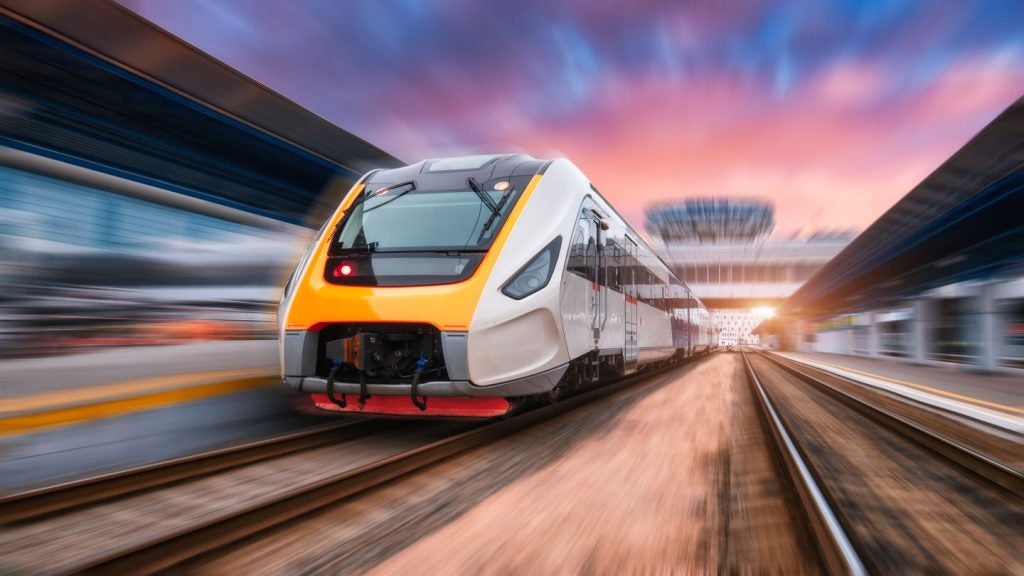
The issue of animal deaths on railways first captivated media attention worldwide in May 2013 when a train killed three elephants in West Bengal, and again in November after a train crashed into a herd of 40 elephants elsewhere in eastern India, killing seven adults and two calves and injuring at least 10 others in one of worst such incidents on record.
Media reported at the time that following the accident, the surviving members of the herd gathered and stood at the scene of the collision for a while, only to be scattered by forest guards and railroad workers later on.
Over the past 10 years, the recorded death toll of elephants struck by trains in India has soared to over one hundred.
As high-speed rail infrastructure is being developed at breakneck pace throughout the world and many train corridors cut through sensitive natural habitats, the subject is of international concern. Accidents involving various species are highly detrimental to local wildlife both in the short and long term, and are proving costly for train companies and a danger to travellers.
Investigations undertaken independently in a few countries offer a glimpse into the potential scale of the problem and various preventive technologies provide clues of how it could be tackled.
Rail-kill: what is being done?
Following the tragic deaths of elephants, tigers, leopards and other species on its territory, India has taken a leading role in investigating the issue and implementing accident prevention schemes to protect its wildlife. A 2002 pioneering program spearheaded by the Wildlife Trust of India, which registered remarkable success in reducing elephant deaths on the railways, was replicated in 2008 in Assam, north-east India, at high-priority sites along 26 railway sections sprawled over 700km.
How well do you really know your competitors?
Access the most comprehensive Company Profiles on the market, powered by GlobalData. Save hours of research. Gain competitive edge.

Thank you!
Your download email will arrive shortly
Not ready to buy yet? Download a free sample
We are confident about the unique quality of our Company Profiles. However, we want you to make the most beneficial decision for your business, so we offer a free sample that you can download by submitting the below form
By GlobalDataThe strategies implemented included the installation of warning signs for train drivers, night patrols along the tracks and introducing staff to assist with elephant crossings. The scheme prevented as many as 329 potential collisions, according to the Elephant Family foundation, which oversaw the project.
The prospect of satellite-enabled level crossing safety has come one step closer to reality.
However effective their practices may have been, manned assistance along high-speed tracks across the world is not a practical solution and better alternatives are needed.
The issue has also received attention in the UK. In 2011, a flock of 30 sheep were struck and killed by a train near Blackford. In November 2014, 12 horses were killed after being hit by a train in Cambridgeshire, followed by another five run over near Teesside Airport station in February 2015.
Although these incidents are reported either when the death toll is high or larger mammals are involved, they are not as isolated as it may seem. In 2012-2013, the associated cost of animals on rail tracks in the UK was around £4.9m, according to Network Rail. The loss, which derives from technical damages to equipment, long delays and compensation payments, was amassed from a total of 346 crashes with animals over that year, out of which 93% involved at least one passenger train.
The upcoming development of the HS2 line may raise the number even higher, as once completed the high-speed line will cut through 153 Local Wildlife Sites and 42 Proposed Local Wildlife Sites, according to the Wildlife Trusts, a UK-based environmental organisation.
In the UK, wildlife is protected to some extent by the Railway Clauses Consolidation Act 1845 still in force today, which makes the British rail industry directly responsible for fencing along the entire length of the network. However, throughout continental Europe and North America, similar laws are absent.
Different measures for different needs
COST341, a joint endeavour between 16 European countries in the Infra Eco Network Europe (IENE) group identified that “there are important differences between countries regarding the cultural, political and scientific contexts of transport infrastructure development at local, regional and national levels.”
Their report ‘Habitat Fragmentation due to Transportation Infrastructure: The European Review’ compiles a comprehensive analysis of various deterrent systems aimed at reducing traffic mortality amongst all species and highlights artificial deterrents in existence, including optical, acoustic and olfactory devices.
The most commonplace system, usually found on highways and roads, is the use of reflectors in the shape of metal strips that capture the light from vehicles to warn animals of incoming traffic – though studies carried out over the past 40 years across the world have questioned the efficacy of this method.
By contrast, the report identified a more successful technique, which has been confirmed to reduce collisions. Olfactory repellents make use of “a mix of scents from humans, wolves and other predators” which are injected into a foam and applied on structures in the vicinity of roads and railways. This method was demonstrated to increase attentiveness and awareness of danger in animals.
Is the answer to animal casualties already in place?
In 2004, the Polish National Railway (PKP) introduced UOZ-1, or “key stimuli proxy”, a device emitting acoustic signals which create a fear factor in animals, deterring them from approaching the tracks.
The novel mechanism, invented at the Natural Forests Department in Bialowieza and created by Polish production company NEEL Ltd., was first installed in Poland on the E20 railway line between Minsk Mazowiecki and Siedlce, followed by the E65 line Warszawa – Gdansk and the E30 line. In November 2012, UOZ-1 was also fitted on two sections of the Russian Railways: Moscow – St. Petersburg and St. Petersburg – Helsinki.
Hailed as cheaper and more effective than other animal deterrence methods, the gadget imitates naturally-occurring sounds, thus keeping animals away from the tracks without chasing them out of their habitat. Despite this, its use seems to be limited and the device has yet to take off as a widely-adopted solution.
Keeping up with the times
Anders Sjölund is the chair of the IENE Steering Committee and national coordinator at the Swedish Transport Administration. He specialises in wildlife, transport and animal vehicle collisions. Sjölund says that in Sweden, around 2,000 moose are killed every year just on the country’s railways, at a cost of between SEK1m and SEK1.5m ($115,000 – $175,000).
“It’s an issue that’s under the radar and it has not been identified as a big problem,” Sjölund says. “We have to study not just the problem, but also the measures we can take to prevent it.”
“There are new technologies, new warning systems being developed, but we need to test them and we have to do so scientifically,” he says. “There are so many ideas and technologies but they are not being tested.”
One such technology is currently on trial. A partnership between Deutsche Bahn Netz AG, Europe’s biggest rail provider, and OptaSense is testing distributed acoustic sensing (DAS) technology in various areas of operation, including animal detection.
Although the system is already used in a range of other sectors, including oil and gas pipelines, the technique has not yet been tested on railways. If the scheme proves a success, once the trial period ends in June 2015, OptaSense will seek to introduce it on the commercial market.
At present, high-speed rail accounts for around 30% of the total long-distance rail traffic in Europe, with no sign of that trend slowing down. According to a report by Amadeus Total Rail, Europe’s high-speed network will grow by 5,000km over the next five years.
With the associated increase in train speeds, network length and passenger numbers, the risk factor to the surrounding environment and its animal inhabitants is also rising exponentially. But while our infrastructure technology is leaping forward, our wildlife protection techniques are still lagging behind the times.




